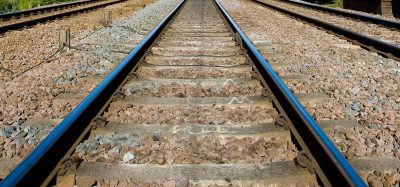Assessing current situations
Posted: 21 July 2009 | | No comments yet
In an interview for Global Railway Review, Mr. Moretti gives his outlook on the European railways situation and also provides details of the important Florence to Bologna high-speed line, due to open in December 2009.
In an interview for Global Railway Review, Mr. Moretti gives his outlook on the European railways situation and also provides details of the important Florence to Bologna high-speed line, due to open in December 2009.
In an interview for Global Railway Review, Mr. Moretti gives his outlook on the European railways situation and also provides details of the important Florence to Bologna high-speed line, due to open in December 2009.
As Chairman of CER and Vice-President of UIC, your point of view is particularly interesting thanks to your international role. What do you think about the current situation of the Railway system in Europe?
The current situation is effected by the economic crisis and the recession is having a major impact in European railways – particularly in the freight sector. The data collected by CER shows a progressive decline throughout Europe in freight traffic since mid-2008. The figures worsened at the beginning of 2009 with the freight traffic volume declining to approximately 35% compared with the same period in 2008. There has been a smaller decline in passenger traffic but the crisis is affecting this sector considering the constant under financing of the public service obligations.
How do you think the railways and the public institutions should react?
The railways in Europe are responding to the crisis by cutting or postponing investments but this brings a risk of having an irreversible loss of traffic and of competitiveness. In my opinion, the railways should react by increasing their efficiency and asking the European Union and the Member States to adequately support railway transport and to improve the regulatory framework in order to remove the current obstacles towards the development of the system. As for Ferrovie dello Stato, 2008 was an important year because we celebrated the success of our high-speed services and, thanks to two years of hard work on both revenues and costs, we reached a positive result. In 2009, we are trying to keep our level of investments and increase our efficiency. On 14 December 2009, we will open the new high-speed line between Bologna and Florence which will complete the Italian High-Speed/High Capacity system from Torino to Salerno and will reduce the journey by another 30 minutes from Milan to Rome. We are going to launch a €4 billion tender for new rolling stock, €1.5 billion for 50 new high-speed interoperable trains and €2.5 billion for new trains for local transport.
For more detailed information about the Florence to Bologna line, please see the final section of this article.
Concerning the European regulatory framework, which changes do you think are needed?
In my opinion, in the coming legislative period, the priorities should be the liberalisation, the investments for infrastructures and interoperability, the equilibrium of the financial architecture and the fight to climate change. At EU level, we know the liberalisation process pursued by the European Commission has been different for freight and passenger railway transport. The liberalisation of EU rail freight transport is starting to pay off. The liberalisation of the EU passenger market is not yet complete: this leads to different competitive situations in the EU countries. The different national legislative frameworks in the EU are a barrier for the competitiveness of the rail sector while we need common rules. The European Commission can contribute to the solution of this fragmented situation by acting at a legislative level, in particular on the domestic passenger market, which is the last segment missing in the framework of the railway liberalisation nowadays in Europe. A revision of the existing legislation should be aimed at the completion of the liberalisation process, through the addition of what is really missing in the railway market at the moment.
Concerning European funding, what do you expect for the next financial perspective?
The railway sector needs sensible investments in infrastructures and in modernisation of technical railway systems – in particular the investment for completing the TEN–T Network (Trans-European Transport Network) and improving interoperability should be the priority.
The development of a TEN-T Network is one of the main objectives of the European Union in order to achieve a sustainable transport system and to react to trends in climate change. Building modern, competitive railway corridors and related services is a fundamental principle for the promotion of rail freight and passenger transport.
Although there have been difficulties, I think that the TEN-T Network shall remain a main priority in the agenda of the European Commission and of EU transport policy as a whole. Further and after a disappointing EU Recovery Plan, we look forward to the EU budget in 2013-2020 to being more adequate to the needs of the TEN-T Network: €20 billion, as in origin proposed by the Commission for 2007-2013, would be more coherent to the expected infrastructure costs. An integrated European railway area also needs improved interoperability. This means technical compatibility – of infrastructure, rolling stocks and signalling and other rail systems. ERTMS is the main example, between innovative technologies, such as signalling and communication and other IT tools, that should be implemented in the entire European network in order to modernise the railways.
Which measures have to be found to assure the financial equilibrium of European railways?
It is my belief that the railway undertakings should be managed according to the principles which apply to commercial companies including public service obligations imposed by the State and public services contracts. I think this is a key issue for all railway companies across Europe, for Central and Eastern European countries and for many Western European countries, such as Italy, France and Portugal. CER asked the European Commission to intervene on this issue during the recent High Level Passenger Meeting held in Rome on 19 June.
You mentioned the fight to climate change; what may be the role of the railways?
This period of economic crisis could be an opportunity for the rail sector to exploit its great potential – first of all for its positive environmental aspects. Before the economic crisis hit, the issue of climate change was at the top of the European agenda. According to data provided by the European Environmental Agency (EEA), transport accounted for close to a quarter (23.8%) of total GHG emissions and more than a quarter (27.9%) of total CO2 emissions in the EU27 in 2006.
Transport is the only sector for which emissions have grown. These data lead us to conclude that it is important to rethink, re-discuss and analyse the policies that influenced the transport system so far – at least during the last 30-40 years. This should be done not only at EU level but also at global level. CER has already committed itself to a 30% cut in the specific CO2 emissions for trains over the period 1990 to 2020. Similar measures are required for more polluting transports such as cars and planes. I think the EU transport policy shall be coherent with the principles of sustainability and ‘fair competition’ between modes. It would be worth to introduce again the principle of ‘modal shift’.
The Florence to Bologna line
The line extends to 78.5km, including 73.8km in tunnels, 1.1km on bridges and viaducts and 3.6km in cuttings or on embankments. It begins south of the outskirts of Bologna with a bridge spanning 61m over the Savena stream. It continues to the Pianoro tunnel (10,841m) where, at approximately the half-way point, it meets the San Ruffillo interconnection. At the end of the tunnel, a 121m viaduct passes over the deep incision of Rio Laurinziano and, with a box culvert, Rio Crocione. The line then enters the Sadurano tunnel (3,855m), which ends at the gorge of Rio dei Cani. The river is crossed with a box culvert. It then continues in a cutting for a short distance until reaching the Monte Bibele tunnel (9,243m). After exiting the tunnel, the line runs along an uncovered stretch and over a 121m bridge that crosses diagonally over the Idice Stream valley.
It then comes to the Raticosa tunnel (10,450m), where it reaches its highest altitude – 413m above sea level. After exiting the tunnel, the HS/HC (high-speed, high-capacity) line crosses the deep incision of the Diaterna Stream on a viaduct (88m), then continues through the Scheggianico tunnel (3,558m) to the Santerno Valley. Here it crosses the Santerno River on a 68m viaduct. At this point, the line comes to the ‘Operating Control Point’ at San Pellegrino – a staff halt for train maintenance, railroad switching and stabling of trains in case of emergencies.
The line then enters the Firenzuola tunnel (15,285m) and exits at the Mugello Plain, where it crosses over the Bagnoncino drainage canal with a box culvert. Next, it passes through the Borgo Rinzelli tunnel (717m) and the Morticine tunnel (654m).
It then crosses the line’s longest uncovered stretch, which extends more than 2.5km and crosses a 641m viaduct over the Sieve Plain and Sieve River. After the bridge, the line enters the northern entrance of the Vaglia tunnel. The tunnel, which is over 18km long, passes through the municipalities of Vaglia and Sesto Fiorentino before ending at the Castello station – the entry point to the Florence junction.
Trial speed runs at 300km/h have been underway since November 2008, during which the highest speed reached was 362km/h. The technological equipment setup phase is expected to be completed by spring 2009. The pre-operational phase will begin by the summer. The line will open to the public in December 2009.
Journey Time
Current time: 60 minutes
From December 2009: 35 minutes
Tunnels
Pianoro Tunnel: 10.8km
Sadurano Tunnel: 3.8km
Raticosa Tunnel: 9.2km
Scheggianico Tunnel: 3.5km
Firenzuola Tunnel: 15.2km
Borgo Rinzelli Tunnel: 0.7km
Morticine Tunnel: 0.6km
Vaglia Tunnel: 18km
Technical characteristics
Design speed: 300km/h
Maximum grade: 18‰
Minimum curve radius: 5,450m
Power supply (3kV DC for interconnections and urban sections): 25kV AC 50Hz
Territory and environment
Regions crossed: 2
Provinces crossed: 2
Municipalities crossed: 13
Environmental remediation measures: 130 hectares
Noise barriers: 8km
New road systems: 140km
Concrete used: 900,000 tonnes






